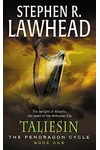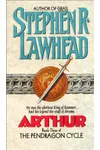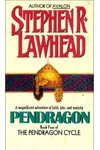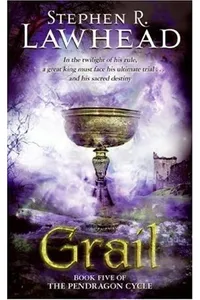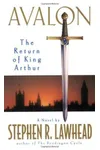Step into the enchanting world of the Pendragon Cycle, where Celtic mysticism, Arthurian legend, and a touch of Atlantean magic weave a spellbinding tale! Written by Stephen R. Lawhead, this historical fantasy series reimagines the story of King Arthur, Merlin, and their companions in a gritty, post-Roman Britain. With its rich world-building and deep Christian undertones, the Pendragon Cycle invites readers to explore a realm where destiny and faith collide.
Unlike traditional Arthurian tales draped in medieval chivalry, Lawhead’s saga grounds itself in the 4th to 6th centuries, blending historical accuracy with fantastical elements. It’s a journey through a turbulent era, perfect for fans of epic fantasy who crave a fresh take on a timeless legend.
How Pendragon Cycle Began
Stephen R. Lawhead, an acclaimed author with a knack for mythic history, launched the Pendragon Cycle in 1987 with Taliesin. Inspired by Celtic mythology, the Mabinogion, and works by Geoffrey of Monmouth, Lawhead sought to craft an Arthurian saga rooted in Britain’s early history. Originally planned as a trilogy, the series expanded to six books due to fan demand and unresolved storylines, with the final book, Avalon, serving as a modern-day epilogue.
Lawhead’s background in theology and his fascination with Celtic culture shaped the series’ unique blend of historical realism and spiritual depth. His meticulous research into post-Roman Britain and early Christianity set the stage for a narrative that feels both authentic and magical.
The Heart of Pendragon Cycle
The series kicks off with Taliesin, a poignant tale of Charis, an Atlantean princess, and Taliesin, a British bard, whose love story bridges two worlds and sets the stage for Merlin’s birth. Merlin follows Myrddin Emrys as he rises to power, battles madness, and witnesses Arthur’s destiny. Arthur, the third book, chronicles the rise of the legendary king, narrated by different characters like Pelleas and Bedwyr. Later books, Pendragon and Grail, dive into Arthur’s reign and the quest for the Holy Grail, while Avalon ties the saga to modern Britain.
Themes of faith, destiny, and sacrifice pulse through the series, with Christianity playing a central role, contrasting with Celtic paganism. Lawhead’s vivid prose paints a rugged yet wondrous setting, from misty British hills to the lost splendor of Atlantis. His use of first-person narration (except in Taliesin and Avalon) and Celtic names like Gwenhwyvar for Guinevere adds intimacy and authenticity, though some readers find the naming conventions tricky.
The series’ style is both poetic and action-packed, balancing epic battles with introspective moments. It’s a slow burn at times, but the emotional payoff is worth it for readers who love character-driven fantasy.
Why Pendragon Cycle Resonates
The Pendragon Cycle has carved a niche in Arthurian literature, praised for its historical depth and spiritual resonance. Fans on platforms like Goodreads laud its fresh perspective, with Taliesin winning the 1988 Gold Medallion Award for Fiction. Its blend of Celtic lore and Christian themes appeals to readers seeking more than standard fantasy tropes. The series’ influence extends to a planned TV adaptation by DailyWire+, announced in 2022, signaling its enduring appeal.
Despite mixed reviews—some critique its slower pacing or heavy religious undertones—the series remains a beloved gem for those who embrace its unique vision. It’s a testament to Lawhead’s ability to breathe new life into a legendary tale.
- Publication Years: 1987–1999
- Number of Books: 6
- Notable Award: Gold Medallion Award for Taliesin (1988)
- Setting: Post-Roman Britain, Atlantis, modern Britain (Avalon)
Ready to embark on an epic adventure? Grab Taliesin and dive into the Pendragon Cycle’s mesmerizing world of myth, magic, and destiny!
